|
Monarch Butterflies Facts!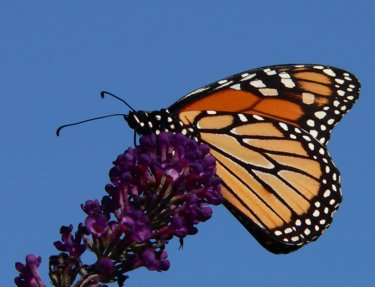
Monarch butterflies facts just fascinate me and I think they are the most beautiful and amazing creatures on earth with their distinct orange, black and white wings. Be sure to see my monarch butterfly pictures page coming soon and visit the live, indoor butterfly exhibit at Natural Bridge Virginia! Let's examine some monarch butterfly facts. Whether you are learning just to satisfy your own curiosity or whether you are studying monarchs for a class, they are truly unique. 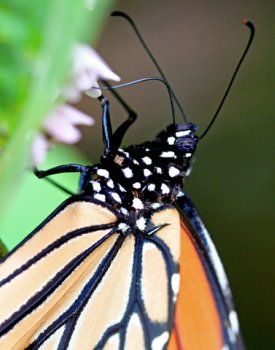
There are actually 4 stages of development for the monarchs starting with the egg, then the caterpillar, the chrysalis and the adult monarch butterfly. This butterfly metamorphosis is technically considered to be four different generations and four different butterflies, all in less than 1 year. This is one of my most surprising monarch butterflies facts! The monarch butterfly life cycle is really short.
They travel between fifty to a hundred miles a day and often stop as thousands of them land in one tree to rest. Amazing! One day I hope to travel to Mexico to see the monarch butterfly migration for myself. Imagine a whole butterfly grove of monarch butterflies! The monarch butterfly eggs are usually laid on the underside of the milkweed leaves. The eggs hatch and then feed on the plant leaves until they develop into the monarch butterfly caterpillar. Have you seen one of these? Here is a picture of one. Kind of ugly isn't it? Looks like something from a horror movie to me!
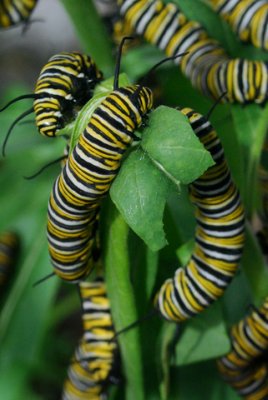
After a few weeks the caterpillars attach to a twig, head down, and shed their outer skin and start the transformation to become a monarch chrysalis. This process takes only a few hours. Then it takes about two weeks to become an adult butterfly and thus, the butterfly life cycle is complete and starts all over again. Their entire life span is only six to eight months long.
It is interesting that while this plant is poisonous, it does not harm the larvae but it does harm creatures who might eat the larvae. Monarchs also winter in Florida and along the coast of Texas and follow the same butterfly migration route each year. Here are a few more monarch butterflies factsIf the monarch's body temperature is less than eighty-six degrees it can not fly. Climate changes that cause colder, wetter weather in their natural habitats can cause the monarch butterflies to be wiped out. Butterflies do not produce their own heat and must rely on the sunshine to warm them up. (Sounds like me!) That is why you sometimes see them resting on a rock sunning themselves. (Maybe I should try that!) They are cold blooded.
Only the male has a black spot on each of their hind wings. Females are bigger and have a slightly longer life span. Butterflies are sometimes called flying flowers. Butterflies, while not as abundant as honey bees, also help to pollinate. Some plants can only be pollinated by butterflies. Here are more amazing monarch butterflies facts... Would you believe they are related to crabs and lobsters? Like these creatures they have skeletons on the outside of the body and are called arthropods. There are more than 750 different species of butterflies in the US and Canada and almost 28000 throughout the whole world. Butterflies can not see all colors but they can see red, green or yellow. 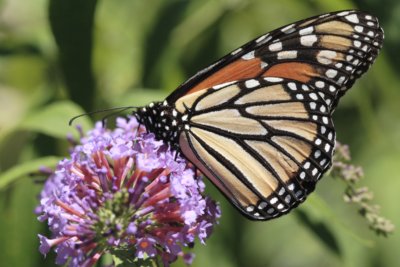
Remember when you saw that butterfly flitting from flower to flower in the back yard and then it took off suddenly? Well, you were right, it did really move quickly. They can move as fast as 12 miles an hour! And finally our last fact: A person who studies butterflies is called an entomologist. People who eat bugs (yuck!) are called entomophagy. (Double yuck!) Here are some other pages you might find interesting:
To return from Monarch Butterflies Facts to Discover-Natural-Bridge-VA home click here |





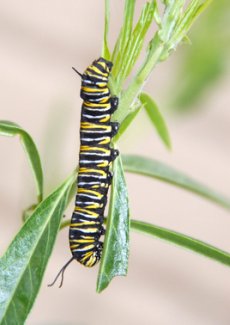 The migrating monarch butterflies are world known for their Spring trip from Mexico to North America after wintering down in Mexico.
The migrating monarch butterflies are world known for their Spring trip from Mexico to North America after wintering down in Mexico. 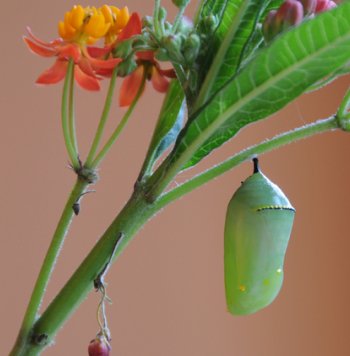
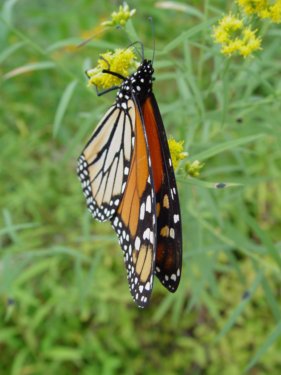 How do you tell the male from the female?
How do you tell the male from the female?